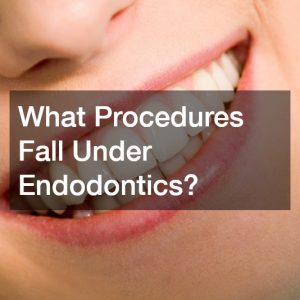Achieving and maintaining oral health is not only essential for a confident smile but also for overall well-being. Dental issues can lead to several health complications if left untreated. Navigating the world of dental insurance can often be overwhelming due to the numerous technical terms and varying coverage options. It’s crucial for patients to understand the insurance terminologies such as premiums, copays, deductibles, coinsurance, and annual maximums to make informed decisions. Dental insurance also plays a significant role in reducing the financial burden of treatments, ranging from routine check-ups to emergency dental procedures and specialized cosmetic treatments. In this extensive guide, we break down these terminologies and explore the scope of prime dental insurance, covering various essential dental services such as family dentistry, cosmetic dental office services, dental crowns, braces, and retainers. Not only will this guide help you understand the financial aspects of your dental care, but it will also introduce you to various preventative and emergency care services provided by local dentists. Finally, we will take a closer look at how partnering with an affordable insurance broker can help you maximize your insurance benefits. Whether you’re planning your next dentist appointment or exploring the benefits of invisalign, this guide has you covered.
Understanding dental insurance is the first step toward making informed choices about your oral health care. Terms like premiums, deductibles, and coinsurance can seem daunting, but they play a crucial role in determining your out-of-pocket costs. For instance, a premium is the regular payment you make to keep your insurance active, while a deductible is the amount you must pay before your insurance starts covering treatments. Additionally, **coinsurance** refers to the percentage of costs you share with the insurer after meeting your deductible. Familiarizing yourself with these terms can help you select the right plan that meets your needs and budget.
Dental insurance also covers a broad range of services beyond routine cleanings. **Family dentistry**, for example, focuses on providing care for all age groups, ensuring everyone in your household maintains good oral health. More specialized treatments, such as dental crowns, **braces**, or **cosmetic services**, can significantly benefit from the financial relief that insurance offers. Whether you’re seeking orthodontic solutions like Invisalign or addressing a dental emergency, having a comprehensive understanding of your coverage ensures that you maximize the benefits and minimize out-of-pocket expenses, all while maintaining optimal oral health. Read on to learn more about the nuances of dental health insurance.
1. Premiums

One of the first terms you’ll encounter when exploring dental insurance is premiums. Premiums refer to the amount you pay, usually monthly or annually, to maintain your dental insurance policy. Without paying these premiums, you risk losing coverage, which can leave you vulnerable to significant dental expenses. Premiums vary widely depending on the level of coverage provided and the insurance provider.
For example, if you require the services of an emergency dentist on short notice, having consistent dental insurance premiums paid ensures you are covered for unforeseen dental emergencies. Emergency dental services can be costly out of pocket, making it crucial to maintain your policy.
Prime dental insurance offers comprehensive plans with competitive premium rates, giving you the peace of mind that your dental health is protected. These plans typically cover various aspects of dental care, including preventive services and major dental procedures. Understanding your premium rates and comparing different plans will help you choose the best coverage that meets your needs.
2. Copays
Another essential aspect of dental insurance is copays. A copay is a fixed amount you pay out-of-pocket for a particular dental service. The purpose of a copay is to share the cost of treatment between the insured and the insurance provider, making dental care more affordable for everyone. Copays can vary based on the type of dental care and your specific insurance plan.
When visiting a cosmetic dental office, for example, you may be required to pay a higher copay than for a routine dental check-up. Services such as teeth whitening, veneers, and other cosmetic treatments often involve higher out-of-pocket costs due to their elective nature.
Prime dental insurance offers plans with different copay rates to suit various budgets. Understanding how copays work can help you anticipate and manage your dental expenses more effectively. By reviewing the copay requirements of your insurance plan, you can be better prepared for any appointments or procedures you may need.
3. Deductibles
Deductibles are another critical element in dental insurance policies. A deductible is the amount you must pay out-of-pocket before your insurance starts covering the costs. Higher deductibles usually result in lower premiums, but they also mean you will have to pay more upfront before enjoying the benefits of your insurance coverage.
For instance, if you require a dental crown, you may need to meet a certain deductible threshold before your insurance will cover a portion of the procedure. Dental crowns are often necessary for restorative purposes, such as protecting a weakened tooth or anchoring a dental bridge.
Prime dental insurance plans typically offer a range of deductible options, so you can find one that fits your financial situation. By carefully selecting a plan with a deductible that matches your needs, you can balance your out-of-pocket costs and premium payments effectively, ensuring you’re prepared for any dental treatments.
4. Coinsurance

Coinsurance is another aspect of dental insurance that involves sharing the cost of dental services between you and your insurance provider. Unlike copays, coinsurance is usually a percentage of the total cost rather than a fixed amount. This means that after you meet your deductible, you will still be responsible for a portion of the remaining costs.
For example, if you’re considering cosmetic dental implant services, coinsurance can help make these high-cost procedures more affordable. Cosmetic dental implants can provide functional and aesthetic benefits, such as improved appearance and better oral health, but they are often expensive procedures.
Prime dental insurance usually outlines specific coinsurance percentages for different types of treatments. Knowing the coinsurance rates in your policy can help you plan for larger dental expenses and budget accordingly. By understanding how coinsurance works, you can ensure you get the necessary treatments without facing financial stress.
5. Annual Maximums
Annual maximums are another crucial term to comprehend when dealing with dental insurance. The annual maximum is the highest amount an insurance provider will pay toward your dental care within a year. Once this limit is reached, any additional costs must be covered out-of-pocket by the insured.
Family dentistry practices often deal with patients of all ages, from children to adults, making it essential for families to understand their annual maximums. Treatments like cleanings, fillings, and orthodontics can add up quickly, so knowing your limits helps in planning your dental visits throughout the year.
Prime dental insurance offers various plans with differing annual maximums to suit individual and family needs. By selecting a plan with a higher annual maximum, you can ensure more extensive coverage for your family’s dental care expenses, helping you manage costs effectively while still receiving high-quality care.
6. Coverage
Understanding your dental insurance coverage is key to taking full advantage of your benefits. Coverage outlines the specific dental services and treatments that your insurance will pay for, either in full or in part. Knowing what is covered can help you make informed decisions about your dental care and avoid unexpected out-of-pocket expenses.
For those considering orthodontic treatments, invisalign is a popular option for teeth straightening. Unlike traditional braces, invisalign uses clear aligners to achieve similar results discreetly. It’s important to check with your insurance provider to see if invisalign is included in your coverage.
Prime dental insurance offers comprehensive coverage options, including preventive care, major procedures, and cosmetic treatments. Reviewing your insurance plan’s coverage regularly ensures that you are aware of the benefits available to you and helps you make the most of your dental insurance.
7. Dental Partners

Choosing the right dental partner is a significant step in managing your oral health effectively. A dental partner is typically a dentist or dental practice that is part of your insurance provider’s network. By consulting with a network dentist, you can maximize your insurance benefits and reduce out-of-pocket costs.
Scheduling a dentist appointment with an in-network provider ensures that the fees and services provided are covered by your insurance policy. This not only saves you money but also simplifies the billing process, as the dentist’s office will work directly with your insurance provider to manage claims.
Prime dental insurance works with a wide network of dental partners to provide you with easy access to high-quality care. By choosing a dentist from the network, you can rest assured that you’re getting the most out of your dental insurance and receiving top-notch treatment from reputable professionals.
8. Preventative Care
Preventative care is an essential component of maintaining oral health and can help you avoid more serious dental issues down the line. Regular check-ups, cleanings, and screenings can catch problems early, making them easier and less expensive to treat. Dental insurance often provides substantial coverage for preventative care services.
Local dentists play a pivotal role in delivering preventative care to communities. By visiting a local dentist for routine exams, you ensure that your teeth and gums remain healthy. Preventative services typically include cleanings, fluoride treatments, and x-rays.
Prime dental insurance places a strong emphasis on preventative care, recognizing that early intervention is key to long-term oral health. By understanding and utilizing your insurance benefits for preventative care, you can reduce the risk of costly and extensive dental procedures in the future.
9. Emergency Care
Dental emergencies can happen unexpectedly and require immediate attention to alleviate pain and prevent further damage. Having access to emergency care through your dental insurance is crucial for managing such situations without significant financial burden.
Braces and retainers are common orthodontic treatments that may require emergency adjustments or repairs. Accidents or issues with these appliances can cause discomfort and affect their effectiveness, necessitating prompt attention from an emergency dentist.
Prime dental insurance offers coverage for emergency dental services, ensuring that you can receive the care you need when a dental crisis arises. By being aware of the emergency care options available through your insurance plan, you can act quickly and manage unexpected dental issues effectively.
10. Cosmetic Dentistry

Cosmetic dentistry focuses on enhancing the appearance of your smile through various elective procedures. While some cosmetic treatments may not be covered by dental insurance, understanding the available options and how to finance them can help you achieve your desired results without breaking the bank.
Consulting with an affordable insurance broker can provide valuable insights into the best insurance plans for covering cosmetic dental treatments. Brokers can help you compare different policies and find one that offers the most comprehensive coverage for procedures like teeth whitening, veneers, and dental implants.
Prime dental insurance includes options for cosmetic dentistry coverage, allowing you to enhance your smile with the support of your insurance plan. By exploring these options and working with a knowledgeable broker, you can achieve your cosmetic dental goals while managing the associated costs effectively.
In conclusion, understanding the various aspects of dental insurance is crucial for effectively managing your oral health and associated costs. From premiums and copays to deductibles and coinsurance, each term plays a vital role in determining your financial responsibilities and coverage benefits. By comprehensively exploring these elements and considering the scope of coverage provided by prime dental insurance, you can make informed decisions about your dental care needs. Whether you’re planning a routine dentist appointment or seeking specialized treatments such as invisalign or dental crowns, having a clear understanding of your insurance policy helps you maximize your benefits. Partnering with local dentists and utilizing the services offered by family dentistry practices ensures that you receive high-quality care for both preventive and emergency needs. Additionally, consulting with an affordable insurance broker can provide further guidance in selecting the best insurance plan for your requirements, especially when considering cosmetic dental options. By staying informed and proactive, you can maintain a healthy and radiant smile while effectively managing your dental expenses.




